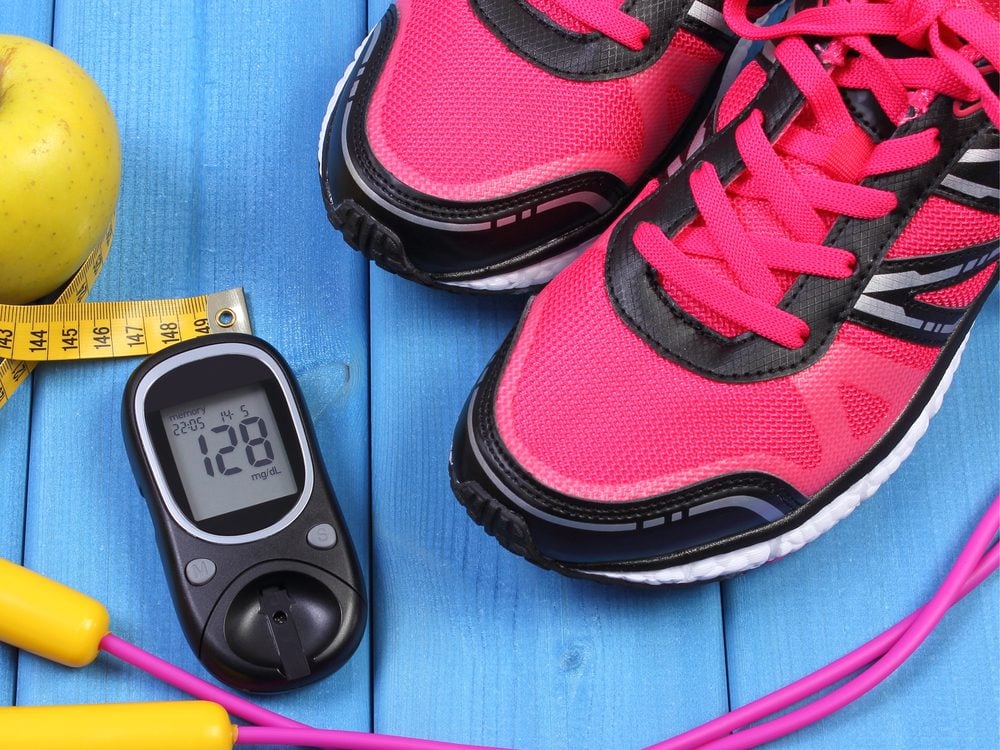
Just a “little touch of sugar?”
If you’re among the approximately 85 million North Americans with prediabetes—higher-than-normal levels of blood sugar, which boost your risk for full-blown diabetes and related health problems—don’t shrug it off. New research published in the journal The Lancet found that prediabetic patients who had at least one normal blood sugar reading, even for a short period of time, were 56 per cent more likely to avoid progressing to diabetes during nearly six years of follow-up after the study.
In other words, “This is your chance to take control,” says Matt Longjohn, MD, MPH, senior director of chronic disease prevention for the YMCA-USA. “Research proves that some simple, daily lifestyle changes can dramatically cut the risk for developing diabetes over the next couple of years by 58 per cent, which is better than what is seen with frequently prescribed medications like metformin.”
The key? Avoid these four roadblocks between you and a healthier future.

Prediabetes mistake #1: thinking a little weight loss won’t help
The landmark Diabetes Prevention Program study, which followed 3,234 people with prediabetes for three years, revealed that everyday changes—smarter eating and more physical activity—helped participants lose a little weight. Trimming just 5 per cent to 7 per cent of their body weight (that’s 12.5 pounds for a 180 pound person) and exercising slashed the odds for developing full-blown diabetes by a whopping 58 per cent. This helps trim abdominal fat—the deep belly fat that settles in your torso, wraps itself around your internal organs, and even invades your liver. It messes with your liver’s ability to regulate blood sugar by pumping out inflammation-boosting compounds that make your body stop obeying insulin.
Smart move: Start with shrinking your portions. “Getting back to healthy serving sizes is an important part of what we teach in prediabetes classes,” says Brielle McKinney, RN, BSN, a practice manager in the Deaconess Health System’s Diabetes Center in Evansville, Indiana. Don’t want to pull out the measuring cups and scale? In one study at the University of Calgary, 17 per cent of people who used a diet plate lost 5 per cent or more of their body weight compared with people who didn’t use the portion control tool. Reserve half of your plate for vegetables and fruit, one-fourth for lean protein like chicken, fish, or lean red meat, and one-fourth for a starch like potatoes or rice.

Prediabetes mistake #2: downplaying your diagnosis
“If your doctor tells you that you have prediabetes or if you know that you’re at high risk for diabetes, you may have time to turn things around,” Longjohn says. But the clock is ticking. In each year after being diagnosed with prediabetes, 10 to 15 per cent of patients will develop the full-blown disease. That means a very high percentage will have diabetes within eight to 10 years, along with a higher risk for serious complications like heart disease, stroke, nerve damage, vision loss, kidney failure, and even foot or leg amputation.
Another important reason to act now: The health risks aren’t all in the distant future. Prediabetes alone boosts your risk for heart disease and stroke by 50 per cent, according to the American Diabetes Association, and raises your risk for kidney problems by 70 per cent compared with people without prediabetes, researchers from the University of California San Francisco found in a 2010 study. Yet just 42 per cent of patients take any steps to turn things around, according to the U.S. Centers for Disease Control and Prevention (CDC).
Smart move: Don’t wait for your doctor to tell you that you have prediabetes. Thirty-five per cent of American adults have it, including half of all people over age 65. Yet only 7 per cent know they have it, according to the CDC.

Prediabetes mistake #3: missing out on movement
Exercise packs a four-way punch against diabetes: It helps you lose weight, shrinks abdominal fat, makes your muscles “suck up” more sugar from your blood, and increases the body’s sensitivity to insulin. You don’t have to become an Olympic sprinter to reap these benefits. All it takes is a half hour of activity five days a week. One Harvard School of Public Health study showed that women who took a brisk 30-minute walk every day lowered their risk for diabetes by 30 per cent.
Smart move: Start with short walks, or walk just a few days of the week, then build a walking habit. Try pacing in your house while talking on the phone; parking far from the entrance at work, at the mall, at the market; or just marching in place in your living room during TV commercials. Your goal is to battle “sitting disease.” Every two hours a day in front of the tube boosts your risk for diabetes by 14 per cent, say Harvard researchers.
Check out these 16 Ways to Lose Weight Walking!

Prediabetes mistake #4: forgetting fibre
A crunchy salad, hearty three-bean chili, fruit for dessert—high-fibre edibles like these are delicious, fill you up, and protect against diabetes in three ways: First, they can help with weight loss. Second, it helps control blood sugar after meals. Finally, many of these foods contain other nutrients, such as magnesium and chromium, which help your body regulate blood sugar. In one study of 486 women, those who ate the most fruit were 34 per cent less likely to have metabolic syndrome, a precursor to diabetes; those who had the most vegetables cut their risk by 30 per cent. Meanwhile, German researchers who tracked 25,067 women and men for seven years say those who got the most fibre from whole grains were 27 per cent less likely to develop diabetes than those who got the least. Yet 33 per cent of adults get two or more servings of fruit and three servings of vegetables daily, the CDC says. And only 8 per cent get three whole-grain servings a day!
Smart move: Order two kinds of veggies (like peppers, onions, broccoli, or mushrooms) on a slice of pizza. Start the day with a smoothie (whirl fresh or frozen fruit with yogurt in your blender). Instead of chips and dip, snack on baby carrots and low-fat salad dressing.

What’s your prediabetes risk?
You’ve got prediabetes if you have a reading between 100 and 125 mg/dL on a fasting blood sugar test or a reading of 5.7% to 6.4% on an A1c check (which reveals your average blood sugar over the past two to three months). Haven’t had a blood sugar check lately? You’re at higher risk for prediabetes if you:
• Are 45 years of age or older
• Are overweight
• Have a parent with diabetes
• Have a sister or brother with diabetes
• Developed diabetes while pregnant (gestational diabetes) or gave birth to a baby weighing 9 pounds or more
• Are physically active less than three times a week